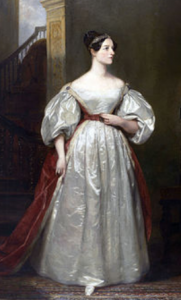Andrea Penrose from CrimeReads discusses the alluring slice of Regency life… Support our news coverage by subscribing to our Kindle Nation Daily Digest. Joining is free right now!
Mention the Regency era, and most readers think of either Jane Austen’s pastoral towns, rich with the pleasures of matchmaking, flirting and Netherfield-style balls at country estates, or the sumptuous swirl of the Season in London, where gossip and scandal went hand in hand with the aristocratic ladies and gentlemen who waltzed through the glittering ballrooms of Mayfair.
Both enclaves represent an alluring slice of Regency life, but they don’t reflect the full richness, complexity and rebellion of the era. It was an exciting, tumultuous time—most historians consider it the birth of the modern world. But first of all, let’s begin by defining the Regency. The term refers to the madness of King George, III and the fact that his oldest son served as the Prince Regent while his father was incapacitated. Though George III died in 1820, the Regency is usually defined as running from 1800 to 1838, when the Prince Regent, who became George IV, died and Queen Victoria came to the throne.
I love the Regency Era because it was all about challenging old preconceptions. Radical new ideas were clashing with the conventional thinking of the past. People were questioning the fundamentals of society, and as a result they were fomenting changes in every aspect of life. Politics, art, music, science, social rules—the world was turning upside down!
Romanticism was taking hold, bringing a new wave of individual expression and creativity. Beethoven was composing emotional symphonies, Byron was penning wildly romantic poetry, Turner was dabbling in impressionistic watercolors and Mary Wollstonecraft was writing the first feminist manifestos. Technology was disrupting everyday life as the Industrial Revolution began cranking into high gear. Interest in science was exploding as people were suddenly wanting to understand the world around them and how it worked. And as we uncover more and more fascinating stories from the shadows of history, we learning that women of the era were a big part of this new intellectual curiosity and willingness to challenge the traditional boundaries.
Read full post on CrimeReads

